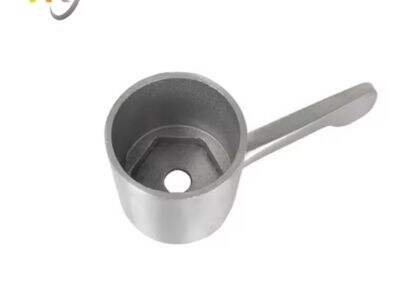Die casting is a specific process that manufactures metal components utilized in various applications that we encounter daily. It is a process that requires melting metal and pouring it into a shape that is known as a mold. The hot metal then cools down to solidify and to take on the shape of the specific mold. This article will outline die casting in more detail, how we melt and pour the metal, finish the parts, and select the right materials. We will also discuss how we can ensure everything works as efficiently and well as possible.
What is Die Casting?
The die casting process is a manufacturing technique that is used to form metal components. This is a technique where we push melted metal into a mold or also referred to as a die. The mold is a two-part mold close fitting parts. We vanquish the hot melted metal into the mold using a lot of pressure. This pressure is critical because it allows the metal to flow into every nook and cranny of the mold. Once the molten metal is injected into the mold, it is allowed to cool down and upon doing so it solidifies taking the very same shape of the mold.
Melting the Metal
Die Casting Process Step 1: Melting Metal It begins with heating the raw metal on a furnace until it melts and becomes very hot. This temperature has to be high enough for the metal to transform from solid to liquid. When the metal is fully melted, we have to transfer it to another furnace. In this holding furnace, we maintain the liquid metal at a uniform temperature until we are able to pour it into the mold. [8] Normally, you keep it at the right temperature so the metal is liquid enough to pour.
Pouring the Metal
Now we have the molten metal, and now it is time to pour it into the mould. High pressure is used to inject the molten metal into the die. This pressure is important because it ensures that the molten metal completely fills every portion of the mold. We want to make sure that there is no air gaps, so that we don’t have fragile or broken sections. We just let it cool down once the metal is inside the mold. As it cools, the metal hardens and takes the shape of the mold.
Finishing the Parts
After the metal is completely solidified, we need to remove the final part from the mold. Step six is where we extract the part, but also remove any leftover metal that may have flowed around it. This metal that we need to remove is called flash and we have to remove it to make the part look nice and give it a good working condition. If it's going to be painted or polished, we might do so as well to give it a smoother finish. This process of finishing is particularly crucial in that it enhances the aesthetics and durability of the part.
Material Selection for Die Casting
Die Casting: Choosing A Material When selecting a Die casting part material, there are many considerations that will inform the best decision for your process and state of the art material. It needs to melt and flow into the mold, but also be strong and robust enough for the application. Aluminum, zinc, and magnesium are some of the prevalent die cast materials. Every material has the properties that make it useful for different things.
The part design is also crucial in Aluminum die casting products process. The part must be designed with the melted metal being able to flow freely and rapidly through the whole shape within the mold. And if there are design flaws, the produced part can be defective, meaning the part does not function as intended.
Making Die Casting Better
Enhancing die casting production requires concentration on optimization and quality. Efficiency is where we need to strive to use as little material as possible and make as many parts as possible. This will be done through designing the components, material selection as well as using the most recent technology and equipment.
Die casting process production mostly relies on quality. To ensure that every component complies with certain standards and adheres to the other components, In order to control quality, we can introduce control processes, such as inspecting each component and conducting tests for any requirement. In this way, we can ensure that any parts manufactured are of a quality they can be trusted to use.
Future of Die Casting
Since the invention of die casting, the process has evolved immensely. Thanks to advances in technology and materials, the process has become speedier, more efficient and more versatile. This has been facilitated with the introduction of computer simulations to aid in modification of parts and the manufacturing process. This leads to better quality parts faster, pervades through industries.
As for what the future holds for die casting, things look very bright. The pharmaceutical and automotive industries are inherently interconnected, which is why die casting will remain a basic approach for lighter and more robust elements. Among the pioneer die casting service providers, is represents companies like Huarui. It utilizes sophisticated technology and machinery in order to manufacture superior metal components. Huarui is committed to delivering reliable service and products that exemplify quality and efficiency.

 EN
EN






































